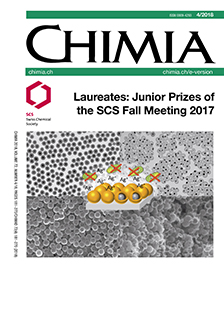Ruthenium-based Photocatalysis in Templated Reactions
DOI:
https://doi.org/10.2533/chimia.2018.207Keywords:
Fluorescent probes, Nucleic acid sensing, Protein imaging, Ruthenium photocatalysis, Templated chemistryAbstract
Templated reactions proceed by bringing reagents in close proximity through their interaction with a template thus raising their effective concentrations. Templated reactions empower chemists to perform reactions at low concentrations in complex environments. Herein, we discuss our work on templated reactions leveraged on ruthenium photocatalysis. Over the past five years, we have used this reaction to uncage reporter molecules and sense or image nucleic acids or proteins of interest. The ruthenium photocatalysis chemistry has proven to be extremely robust and compatible with complex biological environments.Downloads
Published
2018-04-25
Issue
Section
Scientific Articles
License
Copyright (c) 2018 Swiss Chemical Society

This work is licensed under a Creative Commons Attribution-NonCommercial 4.0 International License.
How to Cite
[1]
Chimia 2018, 72, 207, DOI: 10.2533/chimia.2018.207.







